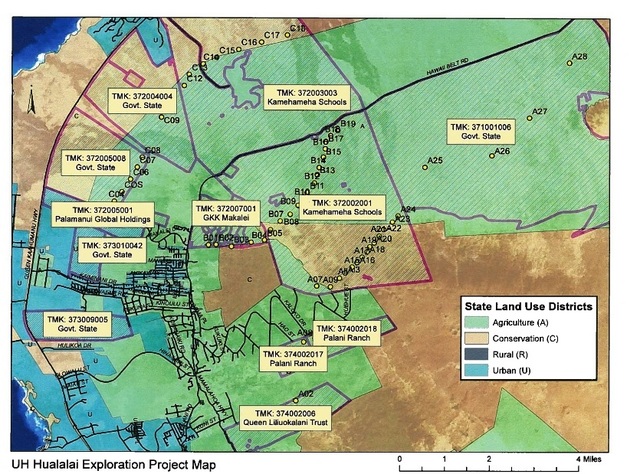The search for geothermal energy under the dormant Hualalai volcano is moving forward. ADVERTISING The search for geothermal energy under the dormant Hualalai volcano is moving forward. A University of Hawaii researcher has asked the state Board of Land and
The search for geothermal energy under the dormant Hualalai volcano is moving forward.
A University of Hawaii researcher has asked the state Board of Land and Natural Resources for a geothermal exploration permit to conduct a noninvasive geophysical study of the west rift zone of Hualalai, just north of Kailua-Kona. The project is funded by the U.S. Department of Energy and the state Department of Land and Natural Resources, researcher Nicole Lautze, with the Hawaii Institute of Geophysics and Planetology, said in her application. She did not return a phone message left at her office by press time Monday.
The Land board is scheduled to consider the application Friday. The meeting is held in Honolulu and begins at 9 a.m.
Lautze said in her application that the Hualalai exploration is the first exploration permit in what will be an overall effort referred to as the “Geothermal Resources Exploration Plan for Hawaii.”
Researchers plan to conduct their surveys on nine parcels of land, all zoned agriculture. They’ve gotten permission from the landowners, which are the state, Kamehameha Schools, Makalei Golf Club, the Queen Liliuokalani Trust and Palani Ranch.
Researchers will use a standard technique called magnetotelluric survey that maps the electrical conductivity of rocks at depths from several hundred feet to as much as 20,000 feet below the surface. “The vast majority of developed geothermal systems in the world are located in regions where water can flow naturally through the heated rock formations,” Lautze said in her application. “Being able to identify the subsurface heat source and fractured zones allows us to begin to address some of the problems of geothermal exploration and development.”
The system uses antennas and electrodes to measure naturally occurring, very low frequency electromagnetic waves. The apparatus does not generate electrical signals or transmit energy, Lautze said. The island’s geothermal production is currently limited to one 38-megawatt power plant, Puna Geothermal Venture, outside Pahoa.
But Hawaii Electric Light Co. President Jay Ignacio told a group of Kona residents in 2011 that the company is investigating expanding geothermal energy production to the west side of the island.
“Hualalai actually does have an area of potential geothermal resources, so it might be a possibility we could have geothermal here on the west side,” he said.





